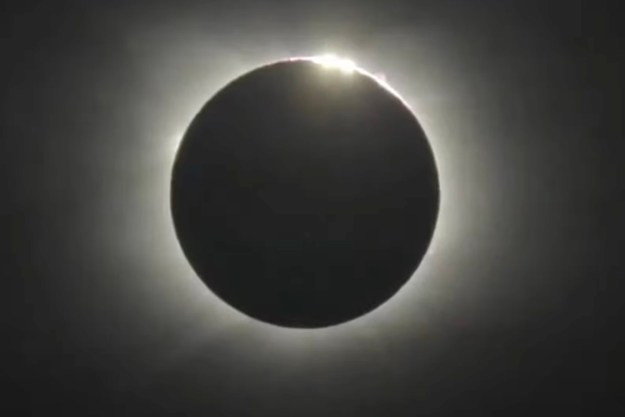NASA has shared remarkable footage of a solar eclipse captured by its Perseverance rover from the surface of Mars.
The video (shown in real-time below) was taken by Perseverance’s Mastcam-Z camera earlier this month and shows Phobos, Mars’ potato-shaped moon, passing across the face of the sun.
Phobos, the innermost and larger of Mars’ two natural satellites, is about 17 miles (27 km) long. Its overall size makes it about 157 times smaller than Earth’s moon.
The celestial body orbits about 3,700 miles (6,000 km) above the Martian surface, with a complete orbit taking just 7 hours and 39 minutes, compared to around 27 days for Earth’s moon.
Observing Phobos enables scientists to learn more about its orbit and how its gravity pulls on the Martian surface, an action that impacts the planet’s crust and mantle. Notably, Phobos is getting closer to Mars and is forecast to crash into the planet in tens of millions of years from now.
Perseverance isn’t the first NASA rover to capture solar eclipses from Mars. Eighteen years ago, the twin NASA rovers Spirit and Opportunity captured the first time-lapse photos of Phobos during a solar eclipse, while Curiosity, a NASA rover that continues to explore Mars today, also used one of its onboard cameras to capture similar footage.
But a video like this is always a real treat for scientists back on Earth who are working on a planetary mission.
“I knew it was going to be good, but I didn’t expect it to be this amazing,” said Rachel Howson of Malin Space Science Systems in San Diego, one of the Mastcam-Z team members who operates the camera.
Howson explained that, although Perseverance always sends lower-resolution thumbnails that offer a preview of the images to come, on this occasion, the high-resolution footage that followed really blew her away.
“It feels like a birthday or holiday when they arrive,” the scientist said. “You know what’s coming, but there is still an element of surprise when you get to see the final product.”
Aside from capturing video of solar eclipses, Perseverance is continuing its quest to search for evidence of ancient microbial life on the red planet, while at the same time gathering rock samples for return to Earth by a future mission.
Editors' Recommendations
- Final communications sent to the beloved Ingenuity Mars helicopter
- Junk from the ISS fell on a house in the U.S., NASA confirms
- The first views of the eclipse are coming in, and they’re stunning
- What kind of view will ISS astronauts get of the solar eclipse?
- The solar eclipse isn’t the only thing to enjoy in the skies in April


